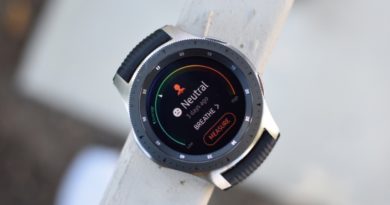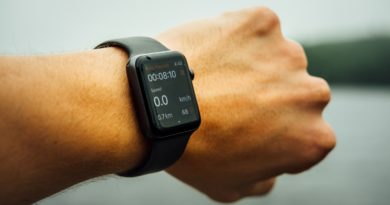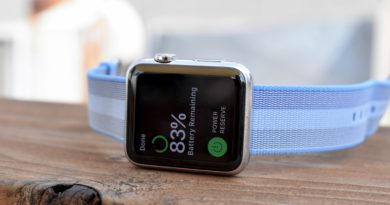Fitbit Versa Lite Edition review
Fitbit is back on the upswing, and it’s largely thanks to the Versa. Launched last year, the company’s second smartwatch has propelled Fitbit as a serious contender in the category, after a shaky start with the Ionic.
Now it’s going to keep riding that momentum with the Fitbit Versa Lite Edition, a more affordable version of its popular watch. Fitbit’s cheapest watch ever, in fact.
Read this: Which Fitbit should you buy?
The Versa Lite Edition brings the price down to £149.99 making it £50 less than the “Full” Fitbit Versa – and barely more than the Fitbit Charge 3.
With that price cut does come some compromises; Fitbit has culled a few features to make the watch more affordable. The theme across Fitbit’s spring product lineup is simplicity and inclusivity; Fitbit sees an opportunity in people who are still on the fence about wearables, and it’s using the Versa Lite as bait.
But will the plan work? Here’s our full verdict on the Versa Lite Edition.
Fitbit Versa Lite Edition: Design
Fitbit Versa Lite key specsFour days battery lifeWaterproof up to 50 metresTracks steps, sleep and workoutsExercise modes for running, cycling and moreConnected GPSFemale health tracking
At first blush, the Lite Edition looks like a total replica of last year’s Versa. But look a little closer: there’s now just one button on the left side of the watch, with the other two now removed.Fitbit says this is part of making the watch more accessible; the theme of the company’s spring device lineup is accessibility and appealing to the less tech-savvy. That said, I suspect cutting the buttons was also a way to bring the cost down.
Those two extra buttons on the Versa are useful for shortcuts and starting workouts, but I wouldn’t say they’re essential. It does mean using the touchscreen more though, and with post-workout sweaty fingers that can be a dangerous game.
Truth be told, I’ve not noticed their absence all that much. I was wearing the Versa a lot before switching to the Lite, and so I do keep trying to tap the ghost of the old buttons out of habit, but their loss isn’t a huge problem. I liked having something tactile to start and stop workouts (as I say, particularly afterwards) but it’s far from a dealbreaker.
The buttons also served as shortcuts for your favorite apps, something you won’t get with the Versa Lite. On my Versa I have the top button set to open the exercise so I now have to scroll across to it instead, which is a process that’s two seconds longer. Again, hardly a dealbreaker, but less easy than on the standard Versa.
Oh, if you’re wondering about Fitbit Pay, that’s not here either. You’ll only get that on the Fitbit Versa Special Edition.
Otherwise, the shape and size of the Versa remain the same. The Lite Edition does arrive in two new colors, mulberry and marina blue, the latter of which I’m showing off in the photos. It’s also available in silver aluminium, which is no longer an option for the “regular” Versa. That one now only comes in black or peach.
Spot the difference: Fitbit Versa (left) and Fitbit Versa Lite Edition (right)All of the Versa’s existing straps will fit the Lite, but the company is launching a few more silicone color options along with some lovely looking woven hybrid straps, based on the popularity of its band collaboration with designer PH5.
Fitbit has clearly been paying close attention to its biggest smartwatch rival: customization has been a key part of the Apple Watch’s success, and the Versa, between the new models, colors and straps, has become a smartwatch you can really make your own.
Fitbit Versa Lite Edition: Features
To bring the Lite Edition down in price, Fitbit has lopped off a few features from the standard Versa. Buttons is one of them, but there are a fair few changes under the hood too.
Essential reading: Fitbit Versa watch faces to download firstLet’s start with what you do get. The Versa has an optical heart rate monitor, tracks exercises including running, cycling, walking, weightlifting, intervals and treadmill training. It runs the same FitbitOS software as the Versa, app store and library of clock faces. You also get sleep monitoring and an SpO2 sensor (though that’s not doing much yet and it offers the same four-day battery life.
Of the main features listed there, one of the major omissions is music. The standard Versa comes with enough memory to store roughly 300 songs on the watch, with support for Deezer and Pandora subscribers to sync their playlists offline. The Versa Lite abolishes all of this, meaning you’ll still be relying on your phone or other music vessel of choice for listening. The watch still has playback controls, accessible with a long press of the side button, so if you are listening to music on a pair smartphone you have some element of control on the wrist.
Is all of this a huge loss? I’m not convinced. The Versa was already compromising by offering offline music storage without GPS. Here again you’ll need to have your phone tethered if you want to track GPS, unlike the Ionic, which does all of that itself. This means it’s highly unlikely you’re going to be without your phone anyway – and by extension, your music library. That’s not to say there aren’t scenarios where local music can be handy, particularly if you’re in the gym where GPS isn’t important anyway. But I think it’s the Deezer and Pandora users who will miss out most by opting for the Versa Lite.
The next big feature gone is swim tracking, which I think is a bigger loss for the Versa Lite. Fitbit hasn’t targeted swimming specifically – more, it’s a side effect of the company removing the Versa’s gyroscope, which counts laps. The Versa Lite is still waterproof up to 50m, so you can certainly still swim with it, but you won’t be able to track the workout beyond calorie burn, active minutes etc.
Fitbit has also cut the altimeter, which means that the Versa Lite also can’t track how many floors you’ve climbed, which may or may not be important to you. If you care about activity tracking though, it’s a disappointing omission.
You also don’t get Fitbit Coach, the company’s personalized workout app. On the standard Versa and Ionic you can access these workouts on the watch – a few are free, others are locked behind a monthly subscription – and have them displayed on-screen. No so with the Lite Edition.
Finally, there’s no Wi-Fi. That one’s not a big deal, and again Fitbit has spun this into a positive that neatly folds into its mission for mass appeal. With the Versa Lite, software updates will now happen piece by piece in the background, and will only install on the watch once they’re fully downloaded. This means less waiting around on updates, at least perceivably – ultimately the download time is the same, you just don’t have to know it’s happening.
Fitbit Versa Lite Edition: Fitness, health and heart rate
Aside from the aforementioned cuts, the health tracking on the Fitbit Versa Lite is identical to the full fat Versa. That means the usual fare of step tracking, all-day heart rate tracking, sleep tracking and integration with Strava, should you want it (there’s an app that comes pre-installed). Female health tracking, which logs menstrual cycles and symptoms, is also available on the Lite. More on that feature here.
Fitbit tells me that nothing has changed in the optical technology it’s using on the Versa Lite compared to the Versa and Ionic. We found the heart rate performance on the Versa generally good until it was under pressure; the watch tended to buckle at the higher intensities.
However, since we reviewed it the Versa has received several tweaks to the algorithms and today it’s better. The Versa Lite has performed pretty well in testing, even if it’s not quite perfect. Tested against the Polar H10 chest strap, we pitted Fitbit’s optical against the tried-and-true EKG, and the results have been pretty close.
Heart rate tracking compared: Fitbit (left) and Polar H10 chest strap (right)In the workout you see above, Fitbit managed to keep up pretty well, with an average and maximum heart rate very close to the chest strap. One caveat: while the Versa Lite did a decent job of catching those intervals, it was lagging behind on the live readout.
There’s clearly still a bit of delay in the optical reading, and this can hit the accuracy when you’re bursting out those intervals. For most people I think the Versa Lite should perform well enough. If you are after something capable of those higher intensity sessions and need the utmost accuracy, I’d still suggest looking more in Garmin’s direction.
Sleep tracking is one place Fitbit has a real edge on the competition right now, and on the Versa Lite you’re getting the full experience. That means tracking of sleep stages through the night, along with Fitbit’s Sleep Insights, which give you personalized feedback on improving your sleep. Accuracy on the Versa Lite is pretty good. I do still find it’s sometimes slow to knowing when I’m actually up, but as far as wrist-worn sleep trackers go, Fitbit’s still leading the pack.
As noted earlier, the Versa Lite comes with the same SpO2 sensor found on the Versa and Ionic. Currently, this is only being used to collect data, rather than being leveraged for deeper health tracking – but that’s the plan. One area Fitbit plans to use this for is sleep, and we got a preview of how it might work back in December when Fitbit enrolled us in its Sleep Score beta. The SpO2 sensor lets Fitbit monitor sleep disturbances, which can be an indicator of sleep apnea. It’s also going to be key to tracking atrial fibrillation, which Fitbit is still working with the FDA on.
Fitbit Versa Lite Edition: As a smartwatch
It’s been over a year since Fitbit launched the Ionic, and with it, its smartwatch platform. The company had big promises – and big competition to take on – so how good is the Versa Lite as an actual smartwatch?
As ever, it comes down to what you even want from a smartwatch, but it’s fair to say that while Fitbit is doing some things better than Apple, Samsung, Google and others, it’s falling behind in some areas. Fitbit’s app store is still anaemic compared to the others, and while it’s slowly filled out with additions from Uber, Philips Hue and Nest, few of the apps feel all that essential.
The same can be said for other smartwatches, but Fitbit’s OS makes matters worse by also being sluggish at times. Fitbit’s targeting low-power performance, so that battery life comes at the expense of faster processing. The result is an experience that feels much less smooth than a Samsung smartwatch or an Apple Watch, and I suspect the lack of gruntpower is liming for developers. Still, if Pebble managed to cultivate such a thriving app ecosystem, it shouldn’t stop Fitbit.
Wareable may get a commission
Fitbit Versa Lite Edition: Battery life
One thing that’s unchanged on the Versa Lite Edition is the battery life. Fitbit promised the same “four days plus” of battery life, which translates to four and a bit if you’re lucky. It’s managed four days pretty easily in testing, and I think it would be easy to get it to five with not too much use of its more power hungry features. Of course, all of this is going to depend on how you use the Versa Lite, but it’s still outperforming the Apple Watch (two days and some change) and any of the Wear OS smartwatches (two days if you’re lucky) as things stand.
Relying on your phone for GPS means it’s outsourcing some of the more intensive work, but if you’re tracking exercises regularly and using a lot of apps, expect the battery to diminish a lot faster.
Fitbit Versa Lite Edition
By Fitbit
The Versa Lite Edition is Fitbit’s best smartwatch proposition yet, taking the already-excellent Versa and streamlining it into a more affordable package. The loss of swim tracking is a downer, but otherwise the Versa offers tremendous value. It’s Fitbit’s best smartwatch yet.
Four-day-plus battery
Great price
Decent fitness featuresNo swim tracking
Onboard music removed
Fitbit OS still lagging behind


